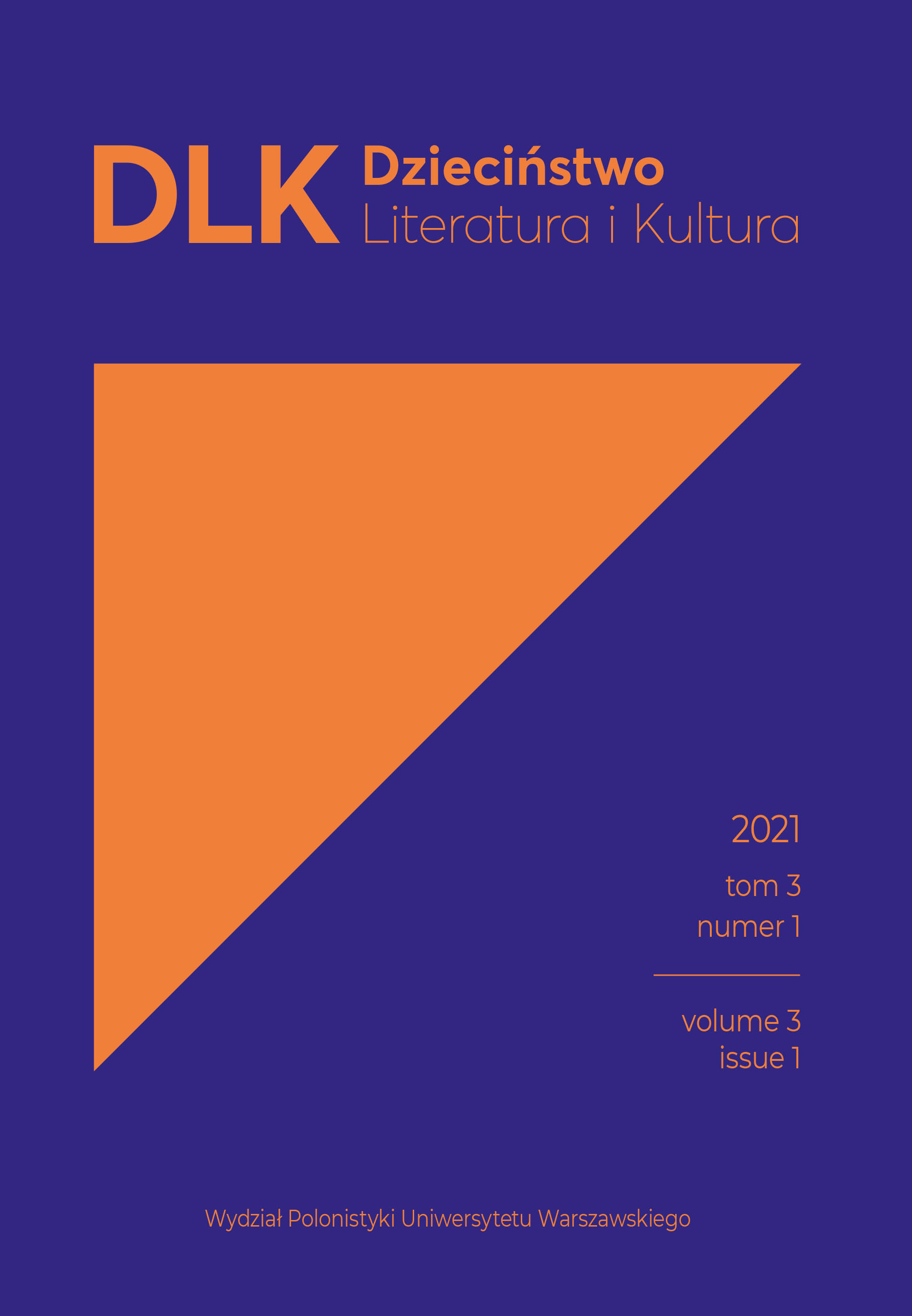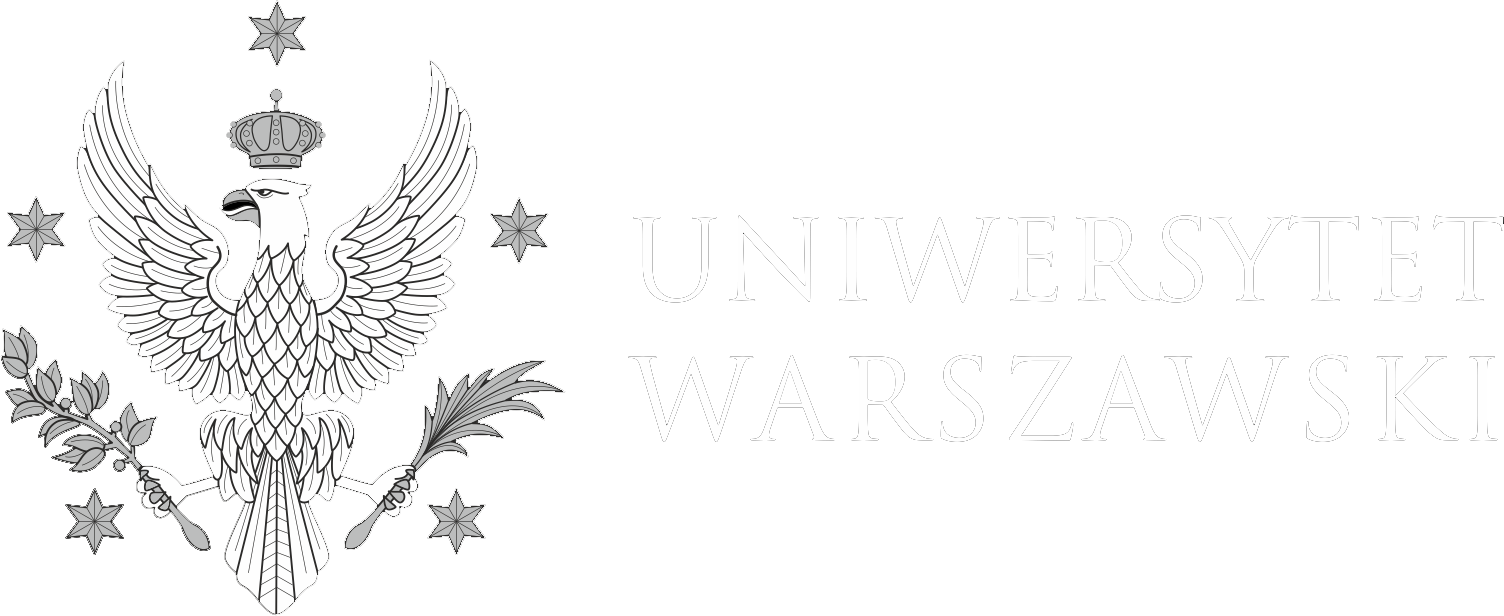Monstrously Minute, Cripplingly Courageous, and Frightfully Flawless: On the Characters of Witches in Children’s Picturebooks
Abstract
The figure of the witch is a vivid element in the 21st-century collective imagination, as evidenced by a plethora of popular culture texts recycling fairytale heroines. The interference with the mythological imagery of the witch is often so strong that one can speak of a blurring of her cultural meaning. Picturebooks for young readers frequently feature witches, but with a modern twist. These contemporary interpretations often modify key aspects of the witch stereotype, including age, appearance, and moral attributes. Magic is used in these stories in a tongue-in-cheek manner, serving as a carnivalesque tool and a form of costume to make stories about children’s problems and desires more attractive. These depictions are clearly influenced by feminist and antipedagogical perspectives, particularly evident in children’s literature. They combine respect for Otherness and individuality with a positive portrayal of the female community in the spirit of sisterhood. This analysis aims to examine these depictions based on several 21st-century English-language works: City Witch, Country Switch by Wendy Wax and Scott Gibal-Broxholm (2008), Only A Witch Can Fly by Alison McGhee and Taeeun Yoo (2009), A Very Brave Witch by Alison McGhee and Harry Bliss (2009), It’s Raining Bats & Frogs by Rebecca Colby and Steven D’Amico (2015), The Itty-Bitty Witch by Trisha Speed Shaskan and Xindi Yan (2019), The Littlest Witch (A Littlest Book) by Brandi Dougherty and Jamie Pogue (2019), and Leila, the Perfect Witch by Flavia Zorilla Drago (2022).
Keywords
antipedagogy; witch; feminism; picturebook; sisterhood; stereotype
References
Baczyńska-Hryhorowicz, A. (2022). Jaki kolor ma wiedźma? Wizerunki kolorystyczne czarownic w filmach animowanych wytwórni Walta Disneya. Literatura Ludowa, 66(4), 61–75. https://doi.org/10.12775/LL.4.2022.004.
Baschwitz, K. (1999). Czarownice. Dzieje procesów o czary. (T. Zabłudowski, tłum.). Cyklady. (wyd. oryg. 1963).
Bednarek, M. (2020). Baśni przeobrażone. Transformacje bajki i baśni w polskiej epice po 1989 roku. WN UAM.
Colby, R. (2015). It’s raining bats & frogs (S. D’Amico, il.). Feiwel & Friends.
Dougherty, B. (2019). The littlest witch: A littlest book (J. Pogue, il.). Cartwheel Books.
Drago, F. Z. (2022). Leila, the perfect witch. Candlewick.
Dragoon, L. (2019). Little witches: Magic in Concord. Oni Press.
Dymel-Trzebiatowska, H., Szyłak, J., Cackowska, M. (2021). Synergia słów i obrazów. Badania ikonotekstu w Polsce. Wydawnictwo UG.
Escabasse, S. (2020). Witches of Brooklyn. Random House USA.
Grimm, J., Grimm, W. (2010). Baśnie dla dzieci i dla domu (E. Pieciul-Karmińska, tłum., t. 1–2). Media Rodzina. (wyd. oryg. 1857).
Hallberg, K. (2017). Literaturoznawstwo a badania nad książką obrazkową (H. Dymel-Trzebiatowska, tłum.). W: M. Cackowska, H. Dymel-Trzebiatowska, J. Szyłak (red.), Książka obrazkowa. Wprowadzenie (s. 49 –56). Instytut Kultury Popularnej. (wyd. oryg. 1982).
Henesy, M. (2020). “Leaving my girlhood behind”: Woke witches and feminist liminality in Chilling Adventures of Sabrina. Feminist Media Studies, 21(7), 1–15. https://doi.org/10.1080/14680777.2020.1791929.
Kostecka, W. (2022). Postfeminizm jako perspektywa rozważań nad kulturą popularną – propozycja metody badań literackiej fantastyki dla młodych dorosłych. Filoteknos, 12, 217–243. https://doi.org/10.23817/filotek.12-14.
Kowalczyk, K. (2016). Baśń w zwierciadle popkultury. Renarracje baśni ze zbioru Kinder- und Hausmärchen Wilhelma i Jakuba Grimmów w przestrzeni kultury popularnej. Stowarzyszenie Badaczy Popkultury i Edukacji Popkulturowej „Trickster”, Polskie Towarzystwo Ludoznawcze.
Kowalczyk, K. (2017). Transformacje wzorców baśniowych w literaturze dziecięcej obecnej na współczesnym rynku wydawniczym. Literatura i Kultura Popularna, 23, 135–151. https://doi.org/10.19195/0867-7441.23.9.10.
Koźluk, M. (2015). Kielich Kirke – moc starożytnej „czarodziejki”. W: J. Pietrzak-Thébault, Ł. Cybulski (red.), Czary, alchemia, opętanie w kulturze na przestrzeni stuleci. Studia przypadków (s. 69–80). Wydawnictwo UKSW.
Kruszyńska, E. (2012). Książka obrazkowa i jej rola w rozwoju dzieci – wprowadzenie w problematykę. Warmińsko-Mazurski Kwartalnik Naukowy. Nauki Społeczne, 3, 183–190.
Levack, B. P. (2009). Polowanie na czarownice w Europie wczesnonowożytnej. (E. Rutkowski, tłum.). Zakład Narodowy im. Ossolińskich. (wyd. oryg. 1987).
Malita-Król, J. (2012). Fantastyczne czarownice. Tradycyjne postrzeganie kobiet parających się magią a ich wizerunek w literaturze fantasy. Maska, 13, 31–42.
Martuszewska, A. (1998). Oswajanie potworów. W: P. Kowalski (red.), Wszystek krąg ziemski. Antropologia – historia – literatura. Prace ofiarowane Czesławowi Hernasowi (s. 307–315). Wydawnictwo UWr.
McGhee, A. (2006). A very brave witch (H. Bliss, il.). Paula Wiseman Books.
McGhee, A. (2009). Only a witch can fly (T. Yoo, il.). Feiwel & Friends.
Mikinka, A. E. (2021). Wiedźmy, wojowniczki, opiekunki – bohaterki polskiej „fantastyki słowiańskiej”. Annales Universitatis Paedagogicae Cracoviensis. Studia de Cultura, 13(3), 114–127. https://doi.org/10.24917/20837275.13.3.9.
Niesporek-Szamburska, B. (2013). Stereotyp czarownicy i jego modyfikowanie. Na przykładzie tekstów dla dzieci i wypowiedzi dziecięcych. Wydawnictwo UŚ.
Sikorska, K. (2019). Siostrzeństwo i jego dyskursywne użycia. Acta Universitatis Lodziensis. Folia Sociologica, 70, s. 39–58. http://dx.doi.org/10.18778/0208-600X.70.03.
Skowera, M. (2021). Nikczemne skrzaty i inne (nie)baśniowe potworności dzieciństwa w Złodziejach snów Małgorzaty Strękowskiej-Zaremby. Literatura i Kultura Popularna, 27, 95–107. https://doi.org/10.19195/0867-7441.27.8.
Slany, K. (2016). Groza w literaturze dziecięcej. Od Grimmów do Gaimana. WN UP.
Speed Shaskan, T. (2019). The Itty-Bitty Witch (X. Yan, il.). Brilliance.
Stephens, J. (2011). Schemas and scripts: Cognitive instruments and the representation of cultural diversity in children’s literature. W: K. Mallan, C. Bradford (red.), Contemporary children’s literature and film: Engaging with theory (s. 12–35). Red Globe Press.
Taplin, S. (2020). Twinkly, twinkly fairies (R. Hahessy, il.). Usborne.
Ucherek, D. (2015). Sposoby funkcjonowania postaci czarownic i czarowników oraz magicznych przedmiotów w baśniach braci Grimmów. Literatura Ludowa, 59(4/5), 15–26.
Ucherek, D. (2018). Baba Jaga, Kościej Nieśmiertelny i inne postacie władające magią w rosyjskich baśniach magicznych a wiedźmy i czarownicy Grimmowscy. Prace Literackie, 58, 249–271. https://doi.org/10.19195/0079-4767.58.22.
Ucherek, D. (2020). Anny Brzezińskiej gry ze stereotypami. Konstrukcja postaci wiedźmy i przetworzenia motywów baśniowych w cyklu o Babuni Jagódce. Literatura Ludowa, (64)2, 50–66. https://doi.org/10.12775/LL.2.2020.004.
von Schönebeck, H. (1994). Antypedagogika. Być i wspierać zamiast wychowywać (N. Szymańska, tłum.). Jacek Santorski & Co. (wyd. oryg. 1988).
Wax, W. (2008). City witch, country switch (S. Gibala-Broxholm, il.). Marshall Cavendish.
Wróblewska, V. (2014). „Od potworów do znaków pustych”. Ludowe demony w polskiej literaturze dla dzieci. WN UMK.
Wydmuch, M. (1975). Gra ze strachem. Fantastyka grozy. Czytelnik.
University of Warsaw Poland
https://orcid.org/0009-0008-4369-3042
Joanna Dardzińska –MA, a graduate of the Faculty of Polish Studies at the University of Warsaw (Poland), is currently pursuing studies in Modern Publishing at the same university. Her research interests include children’s and young adult literature and the theory of verse novels. Contact: j.dardzinska2@student.uw.edu.pl.

This work is licensed under a Creative Commons Attribution 4.0 International License.
Open Access Policy
All articles presented on the pages of ”Dzieciństwo. Literatura i Kultura” are published in open access under a Creative Commons license - Attribution 4.0 International (CC BY 4.0). It means that:
- they can be made available and quoted under the condition of explicit and clear indication of the author/authors of the referenced text;
- you cannot use legal or technological means that would limit others in using the text under the terms of the license.
More information: https://creativecommons.org/licenses/by/4.0/





